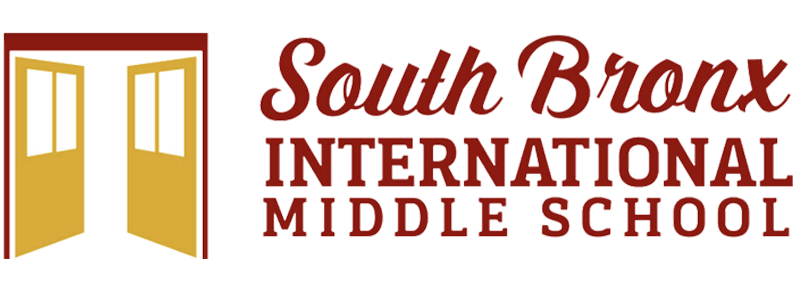South Bronx International Middle School
Instructional Focus
If we use data to plan for cognitively challenging tasks that include a consistent set of reading, writing, speaking and listening strategies with appropriate scaffolds, then students have the confidence to engage in rich literacy experiences that foster equity, access, growth, and achievement.
Scaffolding at SBI:
- At SBI we use data to plan for meaningful scaffolds that provide access to a rigorous task.
- We layer for three groups: green (L), purple (M), red (H).
- All students are engaged in rigorous thinking at their zone of proximal development.
- Scaffolds provide access to rigorous task but DO NOT water down the level of thinking.
Rigorous Tasks at SBI:
The Four Critical Attributes of Rigorous Tasks at MS 593 are:
- Address standards and essential learning in the content area
- Provides appropriate scaffolds for learners to enter the task
- Requires student work products through engagement, collaboration, and/or content specific protocols
- Created in alignment with Webb’s DOK Levels 3 (Strategic Thinking) and Level 4 (Extended Thinking)
*We will continue to use the rigorous task implementation tool as a guide for planning tasks.
Common Instructional Strategies at SBI:
At South Bronx International there are three common strategies which support rigorous thinking across content areas:
- Annotation
- Discourse Triads
- Analytical Paragraph Writing
Annotation
Annotation is connected to the guiding/essential question and the learning target, and it and supports students in moving toward successful completion of an assessment. At SBI, students annotate with purpose and specifically cite and/or reference text in their annotations. The purpose of the annotation is aligned to a specific learning target:
- Locating evidence in support of a claim
- Identifying main idea and supporting details
- Determining author’s purpose
- Giving an opinion, reacting, or reflecting
- Identifying character traits/motivations
- Getting the ‘gist’, summarizing and synthesizing
- Identifying/Defining key vocabulary
- Making connections
- Making predictions
Students use a modified text (i.e. chunked, redacted).
Students may write annotations in home language.
Students use a visual word bank. (image paired with key words in text), and should reference word wall.
Text includes guiding questions and blank thinking maps.
Steps:
- .Circle (○): Circle vocabulary words
- Question (?): Place a question mark next to areas of the text that are confusing or raise a question; write your questions in the margin.
- Box (☐): Box people/characters and places and times/setting.
- Underline (__): Underline 2 important pieces of information
- Star (☆): Place a star when connections are made (self, world, text)
- ✓& ☓: Place a “✓” when you agree and “ ☓ ” when you disagree
Students use modified text (i.e. chunked, redacted), as appropriate.
Students write annotations in English.
Students are given dictionaries to assist in annotating vocabulary, and should reference word wall.
Text includes guiding questions, and students respond with appropriate thinking maps.
Steps:
- Circle (○): Circle vocabulary words
- Question (?): Place a question mark next to areas of the text that are confusing or raise a question; write your questions in the margin
- Box (☐): Box people/characters and places and times/setting.
- Underline (__): Underline key information that supports main idea
- Star (☆): Place a star when connections are made (self, world, text)
6. ✓& ☓: Place a “✓” when you agree and “ ☓ ” when you disagree.
Students use non-modified text.
Students write annotations in English.
Students use dictionaries to assist in annotating vocabulary and should reference word wall.
Students respond to text with appropriate thinking maps as they see fit.
Steps:
- Circle (○): Circle vocabulary words
- Question (?): Place a question mark next to areas of the text that are confusing or raise a question; write your questions in the margin
- Box (☐): Box people/characters and places and times/setting.
- Underline (__): Underline key information that supports main idea
- Star (☆): Place a star when connections are made (self, world, text)
6. ✓& ☓: Place a “✓” when you agree and “ ☓ ” when you disagree.
